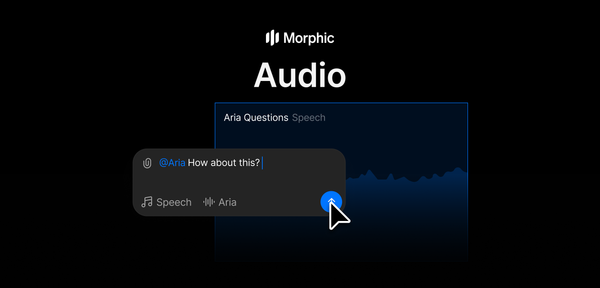How kinematics is changing the game in animation

In the world of animation, particularly in anime, character poses are a vital tool that animators use to bring characters to life. These poses are about more than just making a character stand or sit, they are about capturing the emotion, action, and personality of characters in every frame. But what makes character poses unique in animation?
In animation, character poses often emphasize exaggerated expressions and movements to highlight a character’s mood, intensity, or even inner turmoil. Whether it is a hero's dramatic battle stance or a quiet, reflective moment, these poses are essential in communicating the narrative without relying on dialogue. The characters express and speak without saying a word through poses.
Character Poses in Animation: The Basics
Animation relies heavily on strong character poses to convey everything from intense fight scenes to quiet moments of reflection. In particular, character poses can often be broken into two broad categories:
- Simple Poses: These are common in slower scenes. Think of a character standing under the cherry blossoms, contemplating life. These poses may seem simple, but they carry a lot of weight and meaning, requiring careful attention to posture and facial expression. Even a slight slouch or head tilt can dramatically change the feel of a scene.
- Dynamic Action Poses: From energy blasts in Dragon Ball Z to acrobatic moves in Naruto, these scenes rely on dynamic poses where characters leap, punch, or dodge in exaggerated forms. Capturing these moments requires the animator to push the boundaries of human movement, creating dramatic yet believable poses within the action anime style.
Creating these different character poses by hand can be time-consuming, especially when each frame needs to keep up with the fast pace and intensity of a scene. The more complex the movement, the more work it takes to ensure the poses are consistent and fluid across multiple frames.
What is Kinematics?
Kinematics, in animation, refers to a joint-based system used to control a character's movements. Think of it like a virtual skeleton beneath the character’s design. By manipulating one part of the body, such as an arm or leg, other connected joints naturally follow, ensuring fluid and realistic motion. This approach is especially useful for dynamic scenes, reducing the manual work required to achieve natural poses.
In gaming, kinematics is already integral to engines like Unreal Engine, where it drives real-time, realistic character interactions. Inverse kinematics ensures that when a character moves or interacts with objects, their limbs respond naturally, creating smooth and lifelike motions. This technology allows developers to adapt to respond to player inputs or changes in the environment without needing to redraw or adjust every frame.
The same principles can be applied to animation. By integrating kinematics into animation workflows, animators can adjust character poses more intuitively and efficiently. For example, moving a character’s hand pose automatically adjusts the arm and shoulder in a realistic way, preserving proper anatomy and balance. This accelerates the animation process and allows for more experimentation with complex action sequences or nuanced emotional expressions.
Traditional Process: Crafting Poses by Hand
Traditionally, animators, especially anime artists, used a combination of techniques to create character poses. They began with rough sketches to capture the overall posture and proportions, then refined the details to ensure the pose communicated the desired emotion or action. Exaggeration was often key, with artists using bold angles and curves to enhance expressiveness, while dynamic scenes employed motion lines and foreshortening to suggest movement. A strong silhouette was crucial in making the pose clear before adding finer details. Artists frequently relied on real-life references and studied existing iconic anime poses to improve their understanding of anatomy and pose structure. Key considerations like weight distribution, foreshortening, and perspective helped bring a sense of balance and depth to the poses, making them feel grounded yet dynamic. This process, though time-consuming, was essential in defining the expressive and iconic style of anime.
Crafting Poses through Kinematics
Kinematics offers a range of benefits, making complex character posing and animation more efficient without sacrificing artistic quality. Here's how:
- Faster Adjustments for Complex Action Poses: Imagine a high-energy battle scene from One Punch Man, where Saitama punches through a building in a single frame. Traditionally, animators would have to meticulously draw each key pose by hand. But with kinematics, they can simply move Saitama’s arms and body into the desired position. The joints and limbs follow, ensuring a smooth, accurate pose that looks dynamic and impactful. This can save hours, even days, of work.
- Streamlining Sequences: Kinematics technology allows animators to focus on the artistic side of animations without getting bogged down by repetitive tasks. Take My Hero Academia, for example, where characters engage in fast-paced, power-packed battles. Using kinematics, an animator can position a character in a few key poses, and the technology will handle the fluid movement between them. This creates a smoother workflow and speeds up production without sacrificing quality.
- Consistency Across Frames: During fast-paced fight sequences in animation, maintaining consistent anatomy across frames is crucial to ensuring fluidity. Kinematics helps by automatically adjusting the body based on the joints, so animators don’t need to redraw the entire figure for each new pose. This ensures that characters stay on-model even in fast-moving scenes, like a chase sequence from Sword Art Online where the main characters are constantly shifting their positions as they run.
The Future of Animation with Kinematics
Whether you're crafting the serene, contemplative moments of Your Name or the pulse-pounding battles of Bleach, kinematics makes the process faster and more intuitive. At Morphic, we’ve designed advanced kinematics systems to handle the complexity of poses. The tools allow animators to quickly experiment with different poses, refine movements, and ensure the final product matches the energy and emotion required for each scene.
By reducing the manual labor involved in pose creation, kinematics frees animators to focus on what really matters—bringing their characters and stories to life with the same passion and energy that fans love. Whether it's refining a quiet, emotional pose or crafting an epic battle sequence, kinematics is paving the way for a new era in animation.



